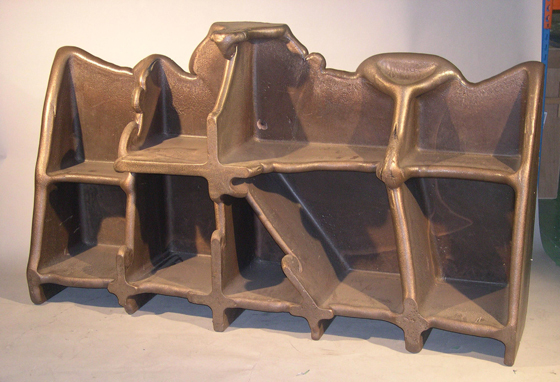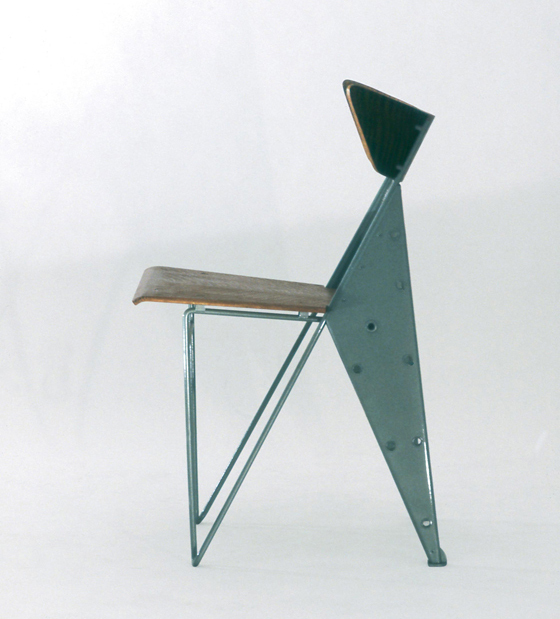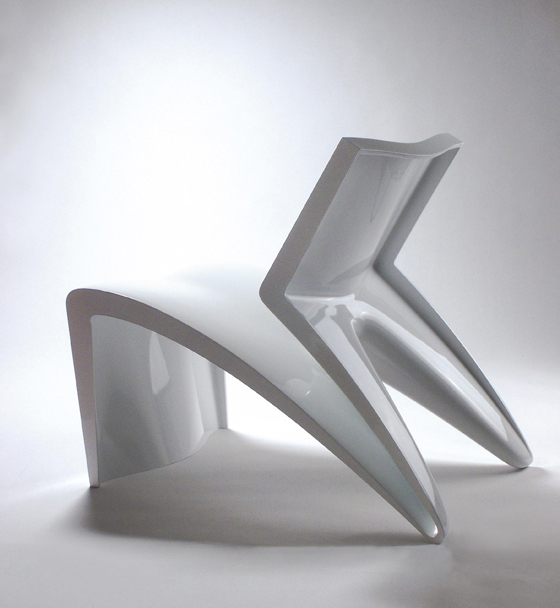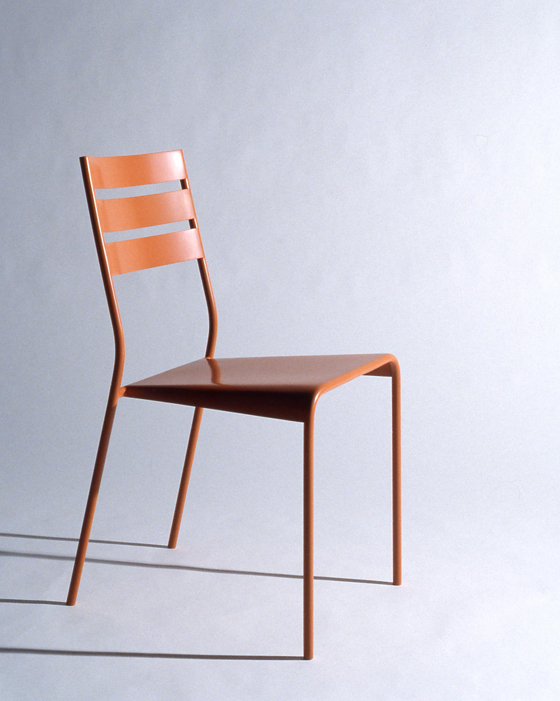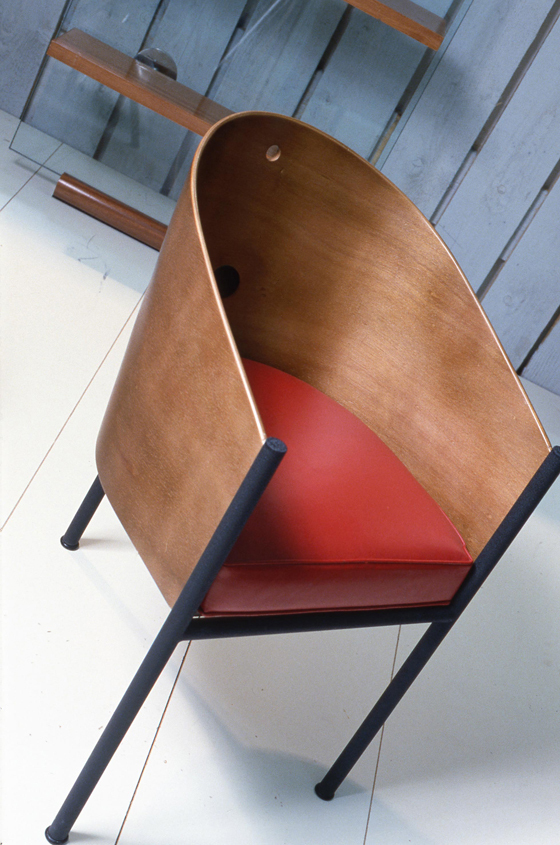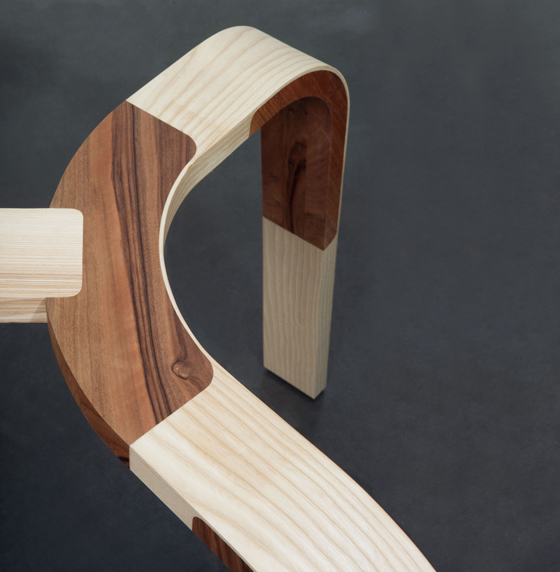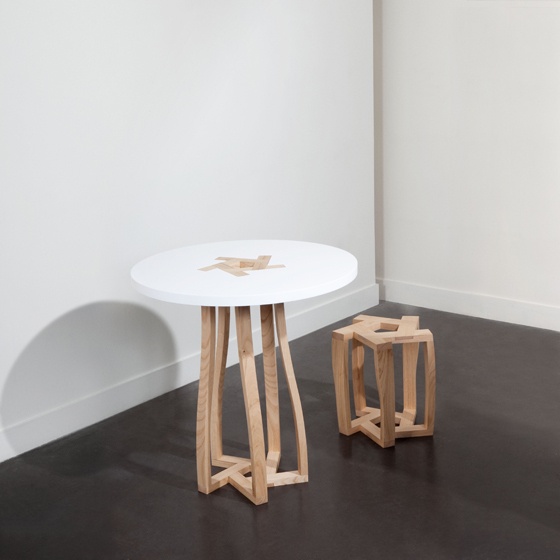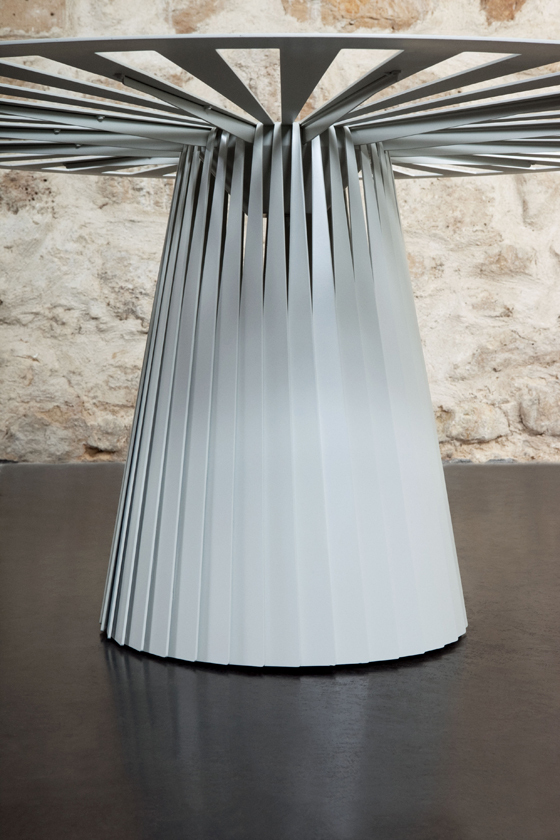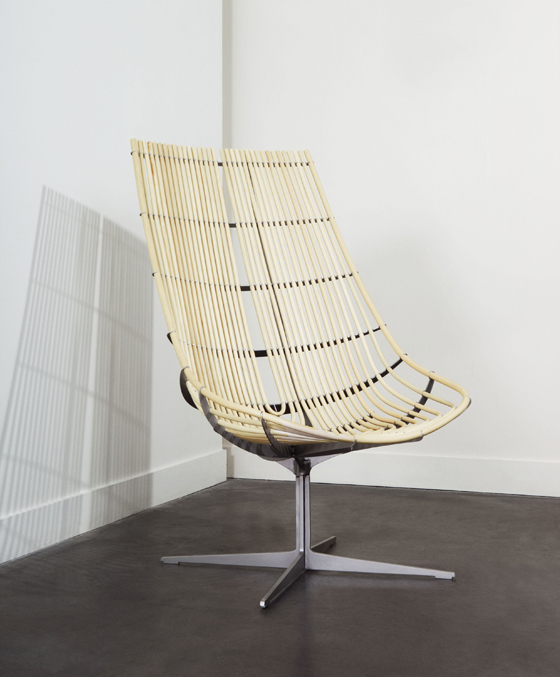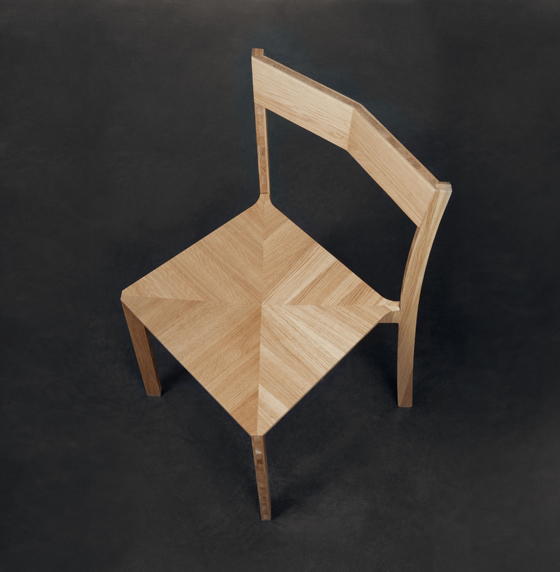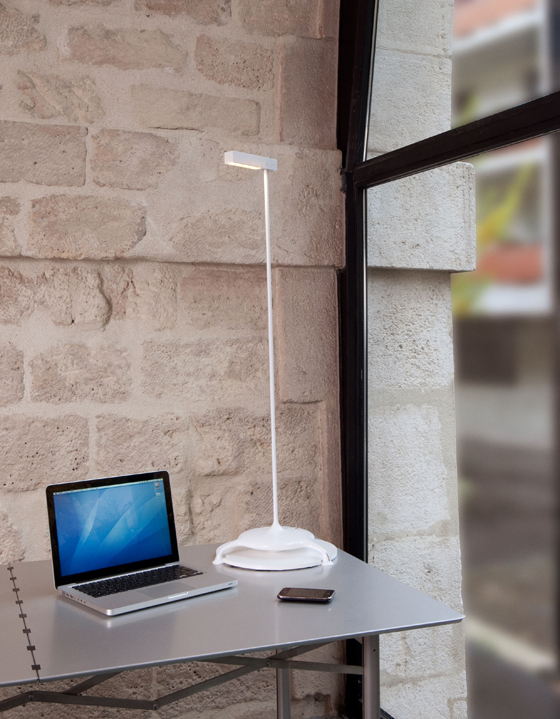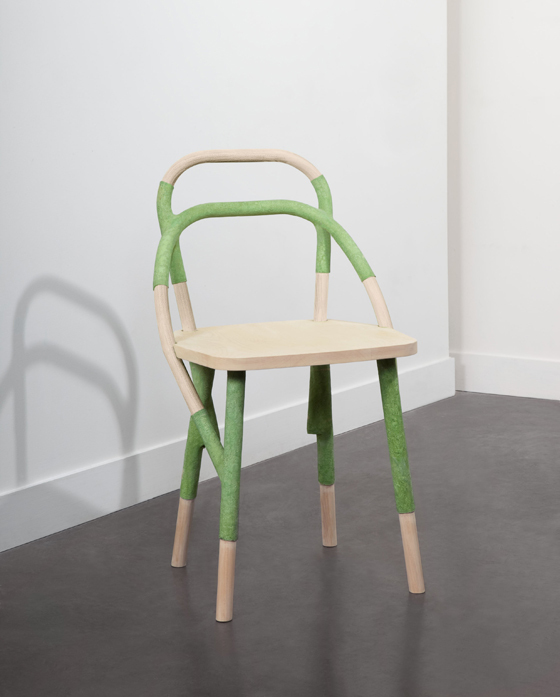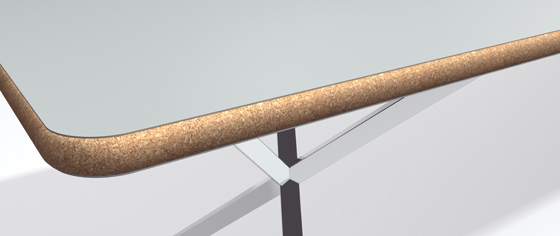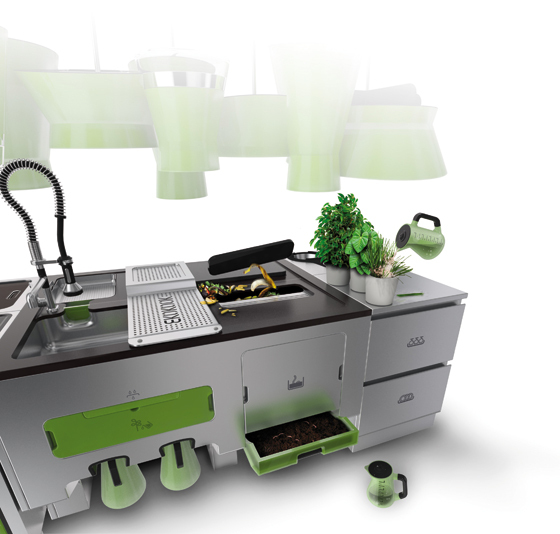Prototype, prototype, prototype
Scritto da Simon Keane-Cowell
Zürich, Svizzera
04.02.10
Architonic spends some time with VIA, the Paris-based organisation committed to identifying and supporting young French design talent.
'We'll always have Paris,' says Humphrey Bogart reassuringly to Ingrid Bergman in the film classic 'Casablanca'. For many of those attending this year's Maison & Objet design fair at the French capital's Parc des Expositions, there was also a feeling of reassurance as high-end, big-name manufacturers set up their glittering pitches in healthy numbers, leaving us with the feeling that things aren't, just perhaps, that bad after all. 'Who says there's a crisis?,' leading Gallic brand Ligne Roset goes as far as asking in its new catalogue. (More of the house of Roset later.)
'VIA Design 3.0' exhibition at the Pompidou Centre, 2009, with François Azambourg's 'Bois-Mousse' chair and footrest (1999) in foreground; photo © Hervé Véronèse, Centre Pompidou, 2009
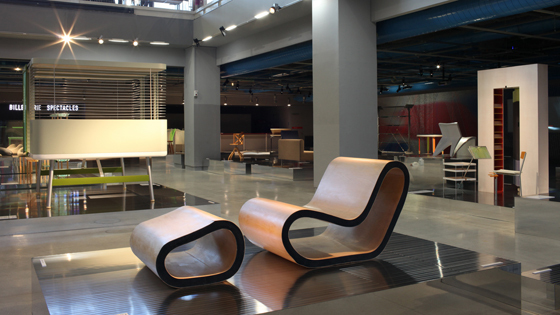
'VIA Design 3.0' exhibition at the Pompidou Centre, 2009, with François Azambourg's 'Bois-Mousse' chair and footrest (1999) in foreground; photo © Hervé Véronèse, Centre Pompidou, 2009
×Elsewhere in Paris, running concurrently with Maison & Objet and beyond, two design exhibitions display a rather different focus, showcasing the work of tomorrow's furniture-design stars, rather than that of designers who've already made it. Both shows are organised by VIA, the body founded by CODIFAB (or the Comité pour le développement des industries françaises de l'ameublement, if you're not that acronymically minded), with the support of the Ministry of Trade and Industry.
Currently celebrating its 30th anniversary, VIA, which stands for Valorisation de l'innovation de l'ameublement, describes itself as 'a platform that encourages exchanges between designers, art directors, manufacturers and distributors'. Patrice Juin, head of projects at the organisation, has a more succinct way of describing what they do: 'We're a laboratory.' Every year, VIA puts its money where the mouth of so many other design-promotional associations is by actually financing through a grant scheme the realisation of projects by young designers, and in doing so reveals new creative talent. Many of the new generation of French designers to have emerged over the last few years, which includes such well-known names as Philippe Nigro, Inga Sempé, and before them Erwan and Ronan Bouroullec, had their early projects funded by VIA.
'Théophile, hommage à Jean Prouvé' by Marc Berthier, 1984
To mark its three decades in business, VIA has mounted a retrospective at the Pompidou Centre of the prototypes to come out of its annual funding programmes. Arranged chronologically, it reads like a who's who of French furniture design. A bold and materially innovative design from VIA's early days is exhibited in the form of Gaetano Pesce's polyurethane-foam bookcase ('Bibliothèque', 1981), which acts almost as provocative, anti-traditional opening statement from the new organisation. In contrast to this, a prototype by Marc Berthier from 1984 is all too aware of design history. His 'Chaise Théophile, hommage à Jean Prouvé', with its flat-metal rear legs, formally references the renowned French engineering-oriented designer.
Jean-Marie Massaud ('Ghosthome' armchair, 1995), Matali Crasset ('W at hom', 1996) and Patrick Jouin ('Chaise Steel Life', 1996) are also among the names whose VIA-financed prototypes appear at the Beaubourg exhibition, their work displaying different conceptual concerns.
A very graphic approach to a furniture project, which at the same time embraces material innovation, can be seen in François Azambourg's 'Bois-Mousse' wood and leather easy chair and footrest from 1999. But perhaps the most spectacular object on show is Erwan Bouroullec's 'Lit Clos' (2000), which operates not only as a piece of furniture, but also as an architectural intervention.
Of course, a look back at design talent that has emerged in France over the last 30 years wouldn't be complete without the inclusion of Philippe Starck, whose name became for a time in the 1980s and 1990s, for better or for worse, shorthand for the phenomenon of the designer as superstar. Starck, together with Jean-Michel Wilmotte, is the subject of an 'exhibition within an exhibition', where a number of his collaborations with VIA are shown separately from the show's main chronological survey. Indeed, the designer was responsible in 1985 for creating the interiors of the organisation's first premises in the central and always-happening Les Halles quarter.
Yet, in spite of all this retrospection, VIA certainly isn't about the museum pieces. The organisation's other show – held at their stunning gallery space on the avenue Daumesnil, which sits within the arches of the old Viaduc des Arts – is all about the now. On display are the prototypes from the 2010 VIA Creation Assistance Grants. 'To put it simply, the VIA story is prototype, prototype, prototype,' Patrice Juin tells Architonic. 'It's our raison-d'etre. With a scale-one prototype you can test everything: the materials, the resistance, the comfort, the aesthetics. But it's also the best promotional tool we can have. With a prototype you can make pictures, you can create a discussion between a designer, a producer, a distributor, and so on. And with a prototype you can show at a fair, a private exhibiton, wherever you want. So we think that the prototype is definitely the best way to communicate and to promote designers. It's so immediate.'
This year's collection of prototypes don't fail achieve that immediacy. From designs that innovate in terms of material, to those that explore new processes, they demonstrate quite clearly the time and money that has been invested in them, and the value of such an investment. The majority of the projects on display are borne out of what VIA calls the 'Project Assistance Grant' scheme. Up-and-coming designers send VIA their proposals (some more developed than others), and the lucky few receive the financial support to translate thinking into physical reality.
'Pentagon' table and stool by Itamar Burstein, 2010
Itamar Burstein, who was funded to deliver two prototypes, explores geometry as a construction method in 'Pentagon', a table and chair set. The entire structure of both relies on the fitting together – without glue or any kind of fixing – of five identital elements. Even more innovative is his 'Flex' project, which proposes a completely new method of curving wood. The traditional technique involves three successive operations (the wood is steamed, shaped in a mould, and then dried), but Itamar's 'Flex' chair, table and coat hanger all use a much simplified fabrication method, whereby a core piece from the object's main element is removed, allowing dry bending. The result is a reduction in tools required, as well as in energy and time.
The cutting-out of pieces is part of Emilie Colin Garros's scheme, too. Her 'Functional Rhythm' table is made from a single sheet of metal, which is laser-cut and folded. The negative becomes the postive, as the elements removed from the table top are bent downwards to form the base of the table. The two-dimensional becomes the three-dimensional, creating a piece that has a strong aesthetic presence. Formally striking, also, is Antoine Fritsch's 'DLR' seat, made of rattan and stainless steel. Beyond its shape, however, it represents a new way of working with its two constituent materials. Fritsch has, through the precision use of digitally controlled tools for cutting the metal, created a highly rational and cost-effective way of fixing the rattan in place.
Fritsch isn't the only designer to concern themselves with rationalisation. Richard Perron's 'Wood' chair is designed in such a way that allows all of its elements to be cut by digital control from a single panel. Susaintability is identifiable as a concern in Stéphane Maupin's 'Saint Clair' solar-powered lamp, too, which features photovoltaic cells on the underside of its base. Not so practical, you'd think, until you realise that some clever suction pads allow the lamp to be stuck to the window, its bottom soaking up the sun. Once charged, the user just takes it down and switches it on.
Other projects on show were the result of two further types of VIA funding. 'Partnership Projects' are VIA-supported collaborations between designers and manufacturers, which focus on innovation in material use or process. Technological transfer is a recurring theme here. This year, Elise Gabriel has worked with TheGreenFactory to explore the possibilities of Zelfo, a 100% biodegradable cellulose paste, in her furniture designs. The result is 'The Zelfo Embrace', a chair, some trestles and a lamp whose form and aesthetics are strange and compelling. Designer Vincent Poujardieu's partnership with Euro-Shelter, a company with a specialism in designing and building lightweight structures for such clients as the armed forces, has produced the 'Nida' table, whose ultra-light, yet super-strong, sandwich-board construction of two aluminium sheets and a honeycomb core means that it's possible to achieve a 5-metre span between bearing points.
'The Zelfo Embrace' chair by Elise Gabriel & TheGreenFactory, 2010
'Nida' table by Vincent Poujardieu & Euro-Shelter, 2010
The big prize, as it were, comes in the form of the VIA 'Carte Blanche', which is awarded annually to designers who demonstrate an originality and maturity of creative approach. Carte Blance projects tend to be more speculative, more conceptual. Faltazi, the established French product-design team who have already designed for the likes of Rowenta and Tefal, have created 'Ekokook', a concept kitchen which, in short, is a low-energy, waste-free kitchen. The project is a provocative statement, a dicussion point, if you like. The inclusion of a compositing unit that is allegedly inhabited by worms and other critters will put a smile on the face of visitors to the exhibition, but the ecological and political messages are serious and clear. When it comes to the environment, the responsibility is a collective one. Designers, manufacturers, users: we're all involved.
'Ekokook' concept kitchen by Faltazi (Victor Massip & Laurent Lebot), 2010
The metaphor of VIA as a design 'laboratory', where ideas are really tested to the limits, is a good one. But it's not a closed shop, where research work is carried out in secret. Patrice Juin again: 'Here, it's an open and free house. VIA was founded 30 years ago for the makers. Manufacturers like Ligne Roset, for example, really understand how to use VIA. They are often here, looking, checking. It's really dynamic. Ligne Roset believe in young designers. But at VIA, everyone is welcome.'
With an invitation like that, what are you waiting for?

